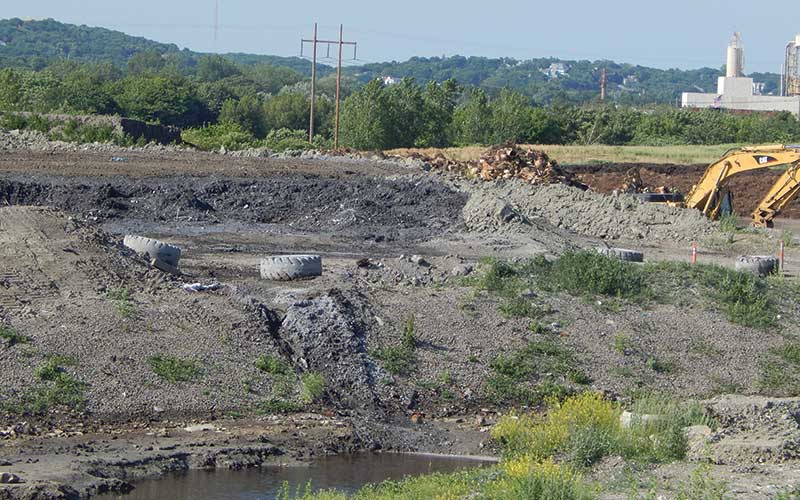
Landfills pollute our air and water with potentially toxic chemicals. Revolutionizing how we handle our waste can reduce these dangers.
Think for a moment about the trash you produce every day, either directly or indirectly. First, there’s what you throw out at your home or your job; then there’s the trash that restaurants, laundromats, doctors’ offices, and other businesses you frequent throw out after you leave.
Next, add the waste from the farms that produce your food; the manufacturers that make the products you use; the local, state and federal government facilities that teach your kids, plow your roads, police your streets, process your taxes, or deliver your mail.
Finally, there is construction and demolition waste – asphalt, bricks, and concrete, as well as pressure-treated wood, asbestos, drywall, and insulation.
All of this together is municipal solid waste, or “MSW,” and revolutionizing how we handle it is what CLF’s Zero Waste Project is all about.
Our Trash Is a Problem and Here’s Why
Most people are unaware that we have a serious – but preventable – solid waste problem here in New England and throughout the country. Across all six New England states, about 11.7 million tons of trash is generated each year for disposal. Much of New England’s waste meets its fate at one of the region’s 61 landfills or 17 incinerators. These facilities are dangerous and polluting to the communities in which they are located.
To understand the health and environmental risks of burying and burning millions of tons of trash each year, you need to know the following:
- Our waste is toxic. Municipal solid waste can contain every and any dangerous substance on the market in the United States. These substances include volatile organic compounds, polychlorinated biphenyls (PCBs), heavy metals, radioactive materials, and pharmaceuticals. Tens of thousands of dangerous substances are spread throughout millions of tons of waste like paper, cardboard, food and yard waste, plastics, containers, and textiles. And it all gets burned or buried in incinerators and landfills near you.
- Every landfill will leak eventually. Some landfills use a plastic liner system under its buried waste. But plastic deteriorates over time, allowing leachate to pass through it and sink into the soil and groundwater. A liquid made from the rain and melted snow that’s fallen on the landfill, leachate gets contaminated by the buried waste and its potential toxins noted above. Likewise, clay or compacted soil liners become increasingly porous over time. Depending on how carefully liners are built and maintained, defects, holes, patches, and cracks may cause landfills to leak almost immediately – and there’s no way to repair leaks once they happen.
- Burning produces toxic air pollution. Incinerators produce ultra-fine microscopic matter that enters the air after escaping pollution control technology. Incinerators emit toxins such as volatile organic compounds, heavy metals, dioxins, sulfur dioxide, carbon monoxide, mercury, carbon dioxide, and furans into the air. Any contaminants captured by the air pollution control measures end up in the incinerator ash. That ash is then buried in landfills, which brings us back to the leaky liner problem above.
- All those contaminants are linked to cancer and more. Dioxins, for example, are a class of carcinogen for which no safe exposure level exists. Heavy metals are dangerous at very low levels and create countless health problems such as heart and lung disease, developmental delays, and respiratory problems, as well as brain, kidney, liver, and nervous system damage.
- Recycling alone is not the answer. Much of what is thrown in our recycling bins is not actually recyclable. Items like plastic bags, polystyrene foam, and single-use coffee cups complicate the sorting process and end up being thrown away. As a result, up to 25% of what is placed in single-stream recycling bins ends up being burned or buried.
If you’re learning about this for the first time, you may be surprised and disgusted by how wasteful and dangerous our solid waste system is. But just know that we can do better. Alternatives to incinerators and landfills exist, which is why CLF’s Zero Waste Project is fighting for long-term, sustainable solutions for managing our waste.
A version of this blog was originally published on December 12, 2017.



